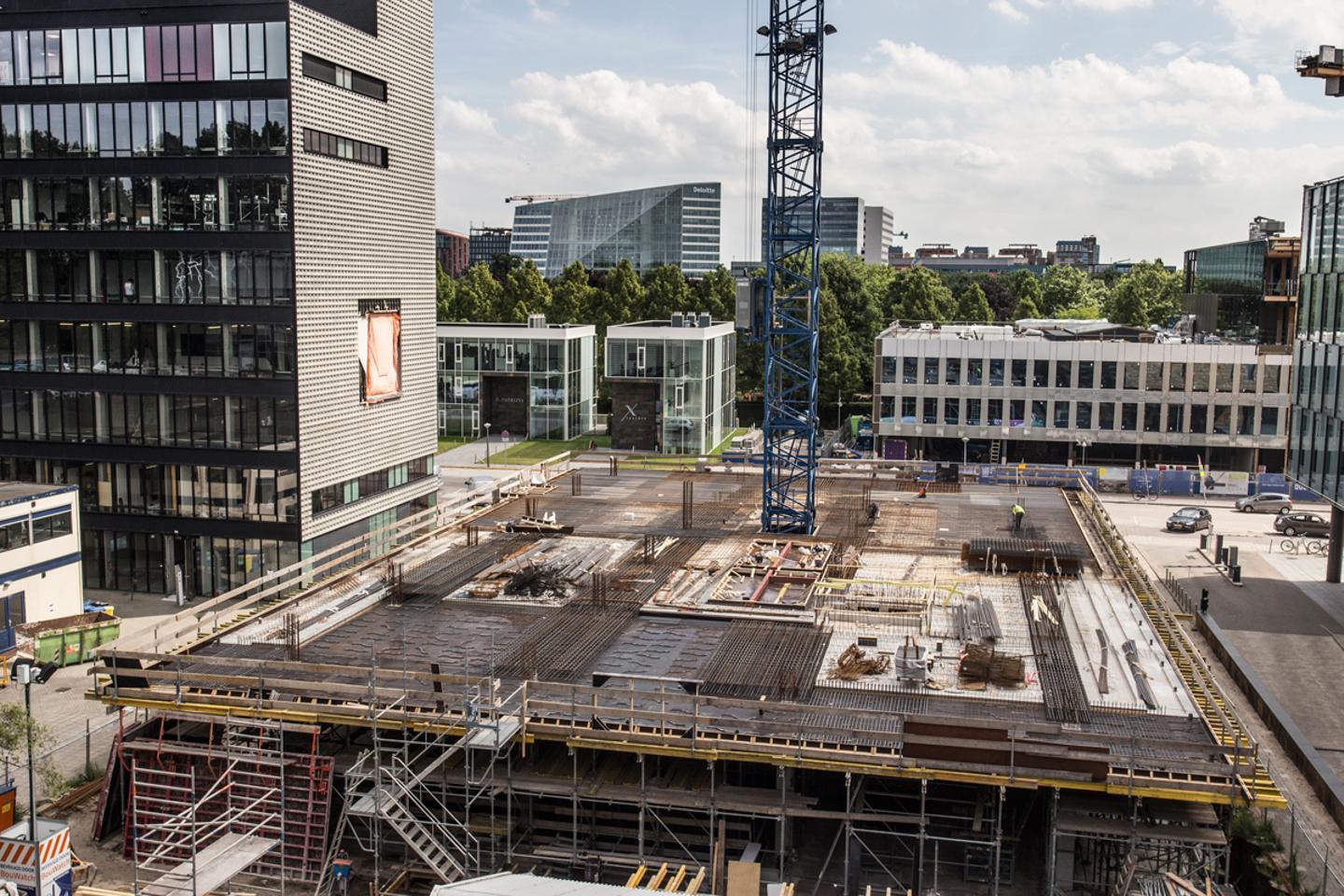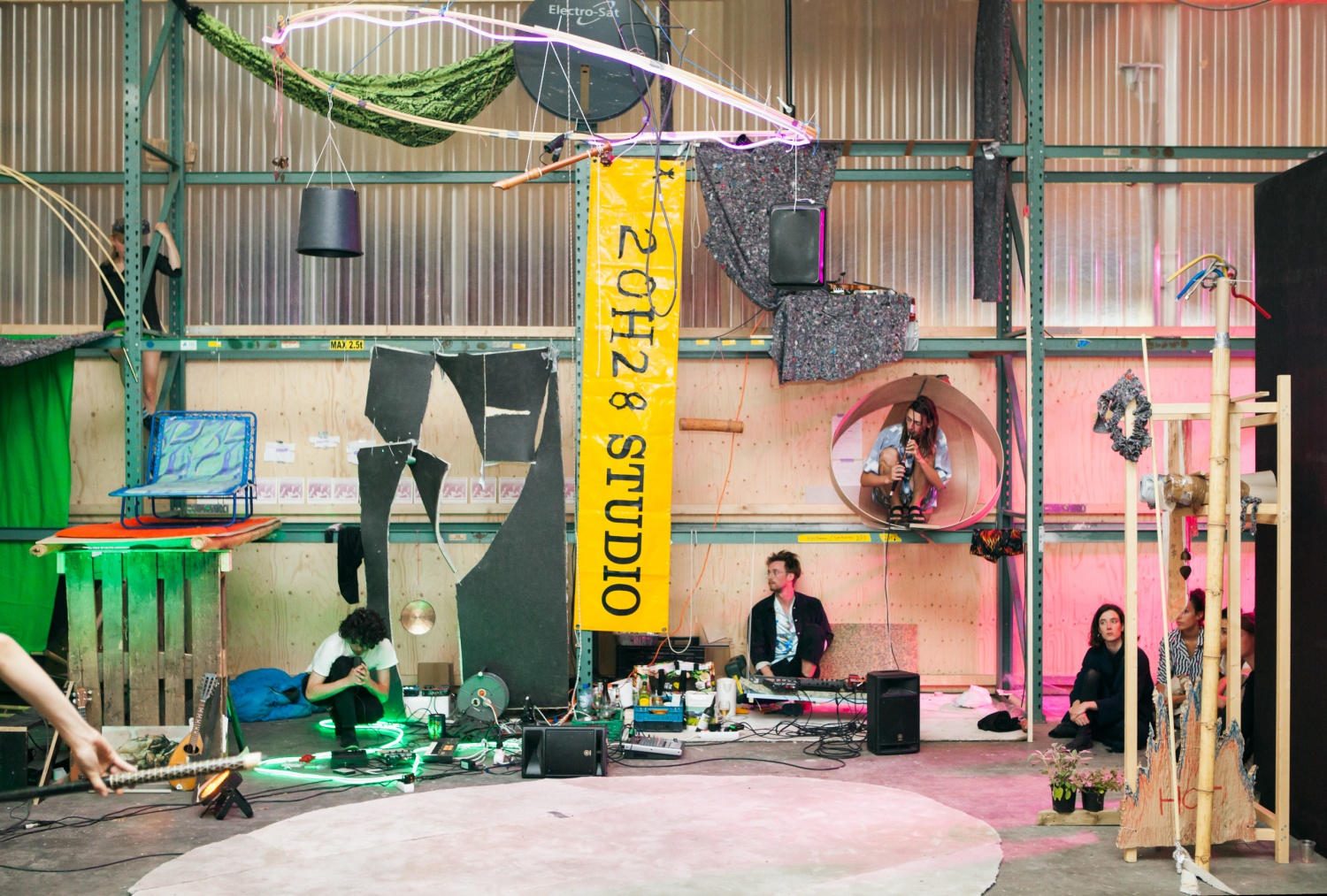Oliver Barstow
Fluid Institutions
"[T]he chance of gain is by every man more or less overvalued, and the chance of loss is by most men undervalued."
ãAdam Smith, An Inquiry into the Nature and Causes of the Wealth of Nations (Amsterdam: MetaLibri, 2007), 88.
Over half a century ago, Michael Young described the conditions of the contemporary economy in his clairvoyant and often quoted essay The Rise of the Meritocracy. While the proponents of the meritocracy state that any individual with the right amount of "skill and imagination" can work to reach the highest level, the reality is that power begets power.1 In a meritocracy, the financial wealth of society is held by a technological elite (the so-called 1%) who control the means of production and this elite is defined and certified by higher education.2
The meritocracy depends for its existence on the state of fluidity that characterises the new economy. Those who worked to establish the meritocracy, did so under the guise of individual freedom, openness and ãaccessã. The ideal was to establish new, fluid institutions, free from the rules and regulations of the old, fixed bureaucratic structures that governed society. In practice, the erosion of the control and distribution of the flow of gains that governed the old bureaucratic structures creates the conditions in which ãrewards gravitate to the most powerful.ã3
In his writings about risk, Richard Sennet cites the meritocracy as the condition that facilitates an extreme kind of risk taking, as the young (and sometimes the not so young) take on debt in pursuit of higher education, believing that they too have the potential to achieve the same level of success as the "chosen" few. In a meritocracy, as Sennett puts it, the decision ã[n]ot to gamble is to accept oneself in advance as a failure.ã4 It is in the pursuit of success, of attending to ones dreams, that constant risk-taking becomes a necessity.
What do we know about fluid institutions? How exactly do they differ from the old, fixed bureaucratic structures and to what end? What is lost in the absence of a clear hierarchy and what is gained where no hierarchy exists? The difficulty with fluid institutions, in attempting to answer these questions, is that they resist documentation. In the pursuit of openness, they are ãmadeã precisely in the absence of formulas, rules and methods that can be tracked and evaluated.
Oliver Barstow
Fluid Institutions
Construction underway of the new Benthem Crouwel at the Sanderg Instituut / Gerrit Rietveld Academie,
By way of contrast, the analogy of a building site might prove useful here. On paper, but also as far as possible, in practice, a building site operates in accordance with a strict daily schedule as determined by a project manager to meet the demands of reaching a fixed, common goalãa finished, habitable buildingãwithin a set period of time. The various roles on site are subject to clear lines of responsibility in accordance with a fixed hierarchy. The bricklayer is accountable to the site manager, the site manager to the engineer, the engineer to the architect and so on. When a problem arises on site, it is transported up the chain of command and solved accordingly so that work can continue. Oneãs position in the hierarchy on a building site is determined by work experience on the hand and the qualifications of a higher education on the other. A bricklayer, after a few years of hard work on site, who shows initiative and has gained the right experience, might work their way up into the position of a site manager. They will not, however, without the requisite degree, take on the position of engineer or architect.
The fluid institution takes aim at the kind of hierarchy and burden of bureaucracy that shapes the construction site. For the fluid institution, there is no common goal, or the common goal is the understanding that the goal constantly shifts and that this is desirable. In the interests of accommodating difference, and ensuring participation, each person in the fluid institution is expected to define their own needs and outcomes, and then to negotiate these with others' expectations. Because everybody charts their own path, there is no predetermined agreement as to what is defined as a successful outcome, just so long as there is continued participation. Work experience counts for little in this situation and there is no certainty that hard work will achieve the desired outcome. Similarly, the qualifications of a higher education do not offer guarantees of success in the fluid institution. The principle of the fluid institution is that the novice, the uneducated, the inexperienced have as much chance of success as the so-called professional. In the fluid institution, everyone is a bricklayer, an architect, an engineer.
Although it occupies physical space, the fluid institution is not fixed to a demarcated site. Physical boundaries, as far as they can be said to exist, are in a state of flux, necessary to ãaccommodateã constant movement. In the absence of a fixed end point, common goal or objective measures applied to doing a good job, the work that happens on site tends to be the result of short term investment; multiple, iterative, ephemeral structures that can be taken down and re-assembled as needs be, in response to the changing environment. The degree to which these temporary structures are sustainable or habitable gives shape to the conditions of precarity that define the fluid economy. Knowing that it is just a question of time before the next metaphorical cyclone strikes, wiping the slate clean, the ãinhabitantsã of the fluid institution are wise not to over invest in their current set up. With nothing to lose (and everything to gain), living in a constant state of departure defines the state of existence.
Oliver Barstow
Fluid Institutions
Graduation project (2018), Gauthier Chambry, Studio for Immediate Spaces, the Sandberg Instituut.
If the fluid institution by its nature resists documentation, then why bother? What is there to be gained from resisting the ebb and flow by trying to fix it as a static image? Certainly it is not only to point out the flaws in the fluid institution and in so doing, to propose a reversal, back to the bureaucratic hierarchy, to order and control imposed from above, with no room for change and experimentation. It perhaps goes without saying that it has been the tendency of all fascist regimes to look back to an ideal, static image of the past as a justification for reinstating measures of control in the present. That said, in a system of absolute fluidity the majorityãthe participants, who carry the risk of participationãare subject to the protocols of those who control the means of participation, even as they make claims in principle to openness, equality and self-determination. In reality, this predisposition to ãopennessã protects those who implement the protocols, freeing them from any accountability to those who participate.
Is it then a question, following the Socratic method, of attempting to find a ãnewã position by resolving the binary between stability on the one hand and fluidity on the other? To find stability in fluidity and visa versa, thus resolving the difference between the two. I would say not. Attempting to resolve difference imposes a subtle but no less damaging form of violence, where the markers of difference are erased or substituted in favour of a new kind of normal. This kind of assimilation of difference does nothing to hold the convenors of the protocol to account. If anything, resolving differences only strengthens their position, offering proof of their commitment to openness and fluidity, for what is flow if not the reconciling of positives and negatives in the interests of productivity and continued participation. Productivity in service of the protocol.
How then to establish accountability? How to mitigate the risk of participation without reverting to measures of control? How to hold the convenors of the protocol to account? One strategy could be to work towards reinstating difference; learning to live with difference as difference, rather than reconciling differences for the sake of participation. In so doing, one creates islands, points of resistance to fluidity. Each island verifies itself by reasserting its difference, forming what we know today as the block chain. Another strategy could be to refuse to participate, but non-participation is the reserve of the privileged few who can afford not to participate or to those who exist outside of the protocol, which is to say that they donãt exist at all, are left to wander the desert. Non participation achieves nothing unless it happens on a mass scale. One final strategy, although there could be countless others, is to implement a protocol to chronicle the prevailing protocol. By actively instating protocols that reflect the prevailing protocol one creates the opportunity for a new kind of participation. This is a form of passive resistance, reflecting back the signal that is received rather than passing it on to the network. The mirror is opaque. It reinstates difference under the guise of similarity.
- https://www.google.com/search?q=Dictionary#dobs=meritocracy accessed May 3rd, 2019 ↩
- Michael Young. The Rise of the Meritocracy, 1870-2033 (London: Thames & Hudson, 1958) ↩
- Ibid., 89 ↩
-
Richard Sennet. "
Risk" in The Corrosion of Character: The Personal Consequences of Work in the New Capitalism (New York, W.W. Norton & Company, 1998), 90. ↩
About the author
Oliver Barstow (South Africa) is a writer, editor and artists currently based in Amsterdam, the Netherlands. He is the editor of the Sandberg Series and the online editor of ZAM Magazine. He is also the co-ordinator and publicist for Englishes MOOC, an online art project by Nicoline van Harskamp. In 2018 he received the Mondriaan Fonds Jong Talent Award for artistic development. He graduated from the Sandberg Instituut as part of the temporary master, Materialisation in Art & Design in 2017. In 2010 he co-founded the independent art book publisher, Fourthwall Books in Johannesburg, South Africa.

